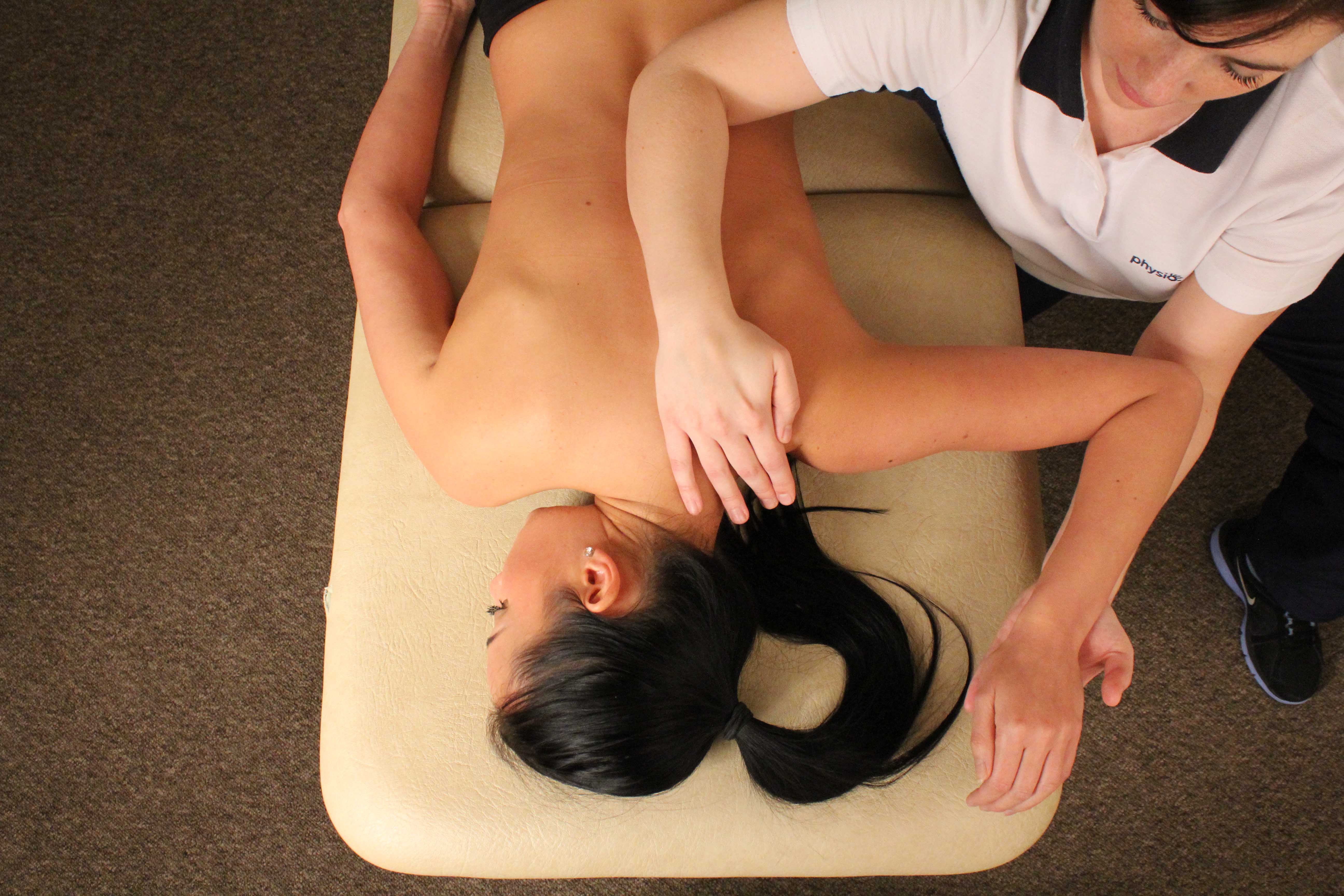What is suprascapular nerve palsy?
Suprascapular nerve palsy occurs when the suprascapula nerve is damaged. This can cause pain and weakness in the muscles that the suprascapula nerve innervates (controls). The suprascapula nerve innervates the supraspinatus and infraspinatus which are both muscles of the shoulder.
 Above: Mobilisation exercises of the shoulder to relieve impingement
Above: Mobilisation exercises of the shoulder to relieve impingementWhat causes suprascapular nerve palsy?
Suprascapula nerve palsy mainly occurs as a result of the suprascapula nerve being compressed. This can be caused by:
- Trauma to the shoulder damaging structures surrounding the nerve
- Trauma of structures surrounding the nerve as a result of overuse of the shoulder
- A cyst
What are the symptoms of suprascapular nerve palsy?
Symptoms of suprascapula nerve palsy can include:
- Reduced range of movement and pain at the shoulder, especially on abduction (outwards movement) and external rotation (twisting outwards)
- Weakness at the shoulder
- Visible muscle wasting of the shoulder
Physiotherapy for suprascapular nerve palsy
Physiotherapy is very important in rehabilitation of suprascapula nerve palsy. Physiotherapy is aimed at reducing symptoms and restoring function. Treatment may include:
- Electrotherapy
- Stretching exercises
- Strengthening exercises
- Practice of functional movements
Can suprascapular nerve palsy cause any long-term effects?
Physiotherapy can be effective in treating suprascapula muscle palsy. If there is still pain and loss of function after physiotherapy intervention then surgery may be required. Physiotherapy would then be important in rehabilitation after the surgery.
To arrange an assessment with Physio.co.uk please contact us or call 0330 088 7800.

 0330 088 7800
0330 088 7800

































